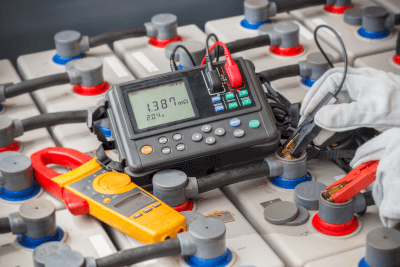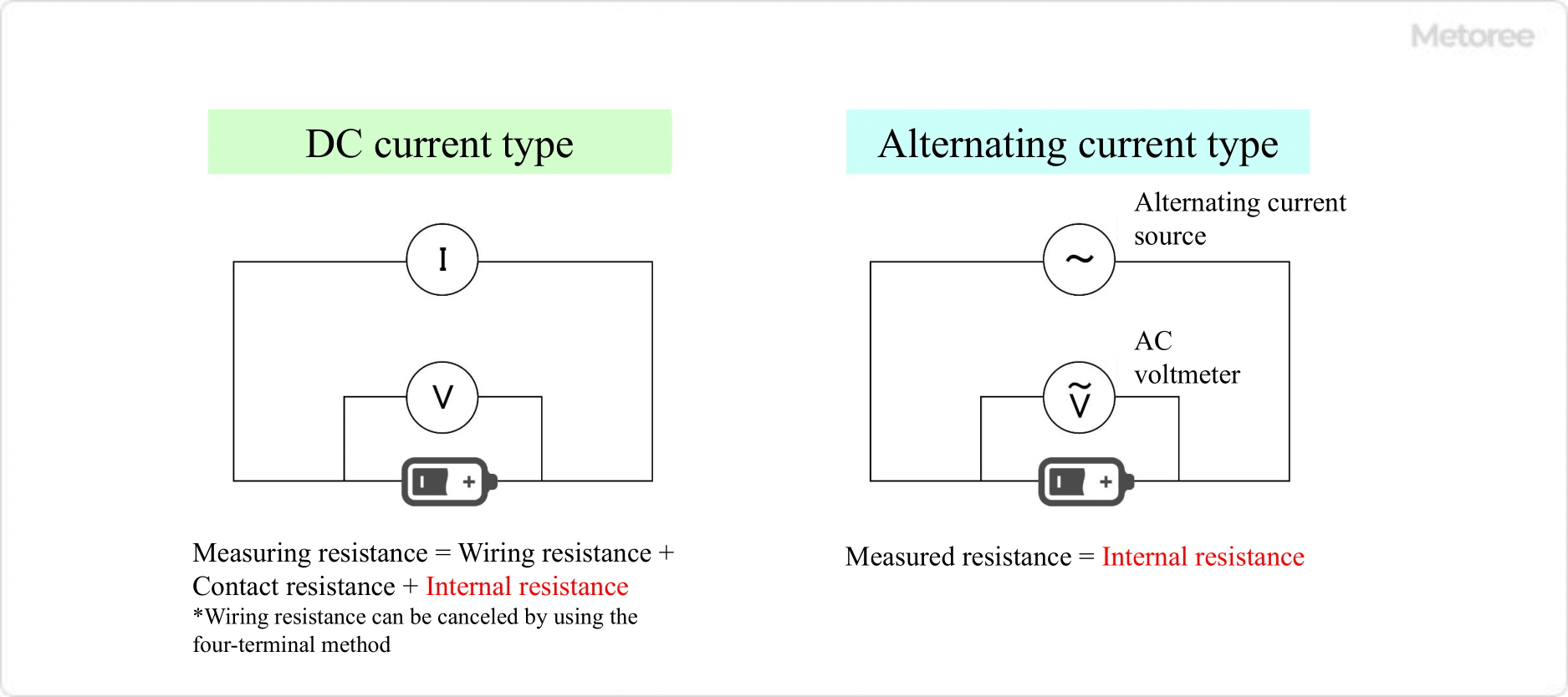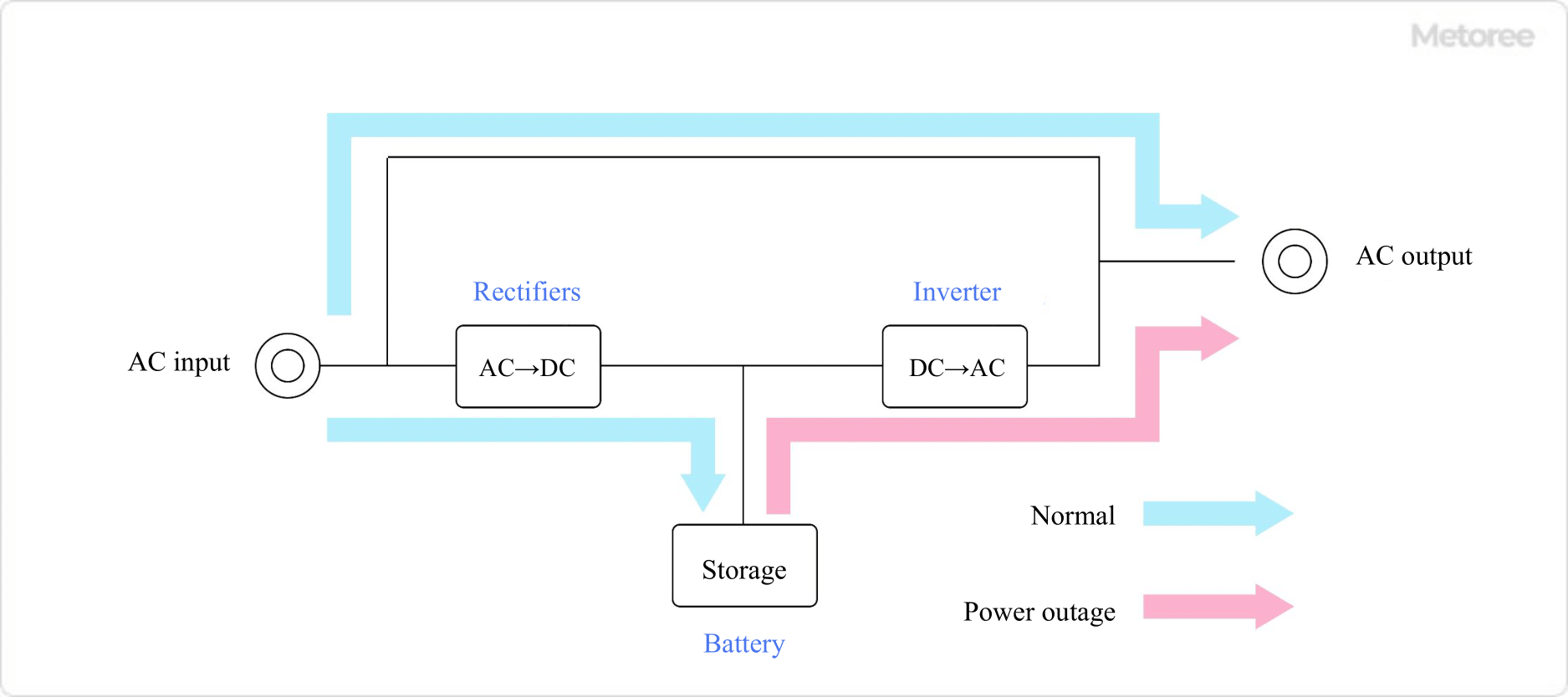What Is a Battery Tester?

A battery tester is an instrument that can easily measure the internal resistance and voltage of a battery with a probe to diagnose the deterioration of a rechargeable battery.
Normally, as rechargeable batteries are repeatedly charged and discharged, their internal resistance increases, and their performance gradually degrades. Rechargeable backup batteries may also deteriorate over time, and it is important to diagnose their performance in advance.
Using a battery tester, battery performance can be diagnosed immediately without shutting down the equipment. Data is stored in the internal memory and can be transferred to a PC for easy data management.
Uses of Battery Testers
Battery testers are used to diagnose the deterioration of secondary batteries such as lead-acid and lithium-ion batteries.
In recent years, the demand for secondary batteries in smartphones and electric vehicles has been increasing, and battery testers are useful for diagnosing their deterioration.
By bringing the measurement leads into contact with the electrode terminals, measurement, and storage can be performed in a short period. This makes the tester useful in situations where you want to immediately measure the condition of batteries on-site and manage the stored data using a PC.
Principle of Battery Testers
The basic principle of a battery tester is simple: measure the voltage when a current is applied to a battery and measure its internal resistance.
Since there are various types of battery testers available, the appropriate one should be selected according to the desired measurement accuracy and budget. Here, we will explain the principle by dividing them into those that use a DC power supply and those that use an AC power supply.
1. DC Power Supply Type
In resistance measurement, the internal resistance R is measured according to Ohm’s law by applying a measurement signal current I and measuring the voltage V with a voltage system. There are two methods of resistance measurement: the 2-terminal method and the 4-terminal method. The 4-terminal method is used in battery testers because of its high measurement accuracy. An overview diagram of each method is shown below.
In the 2-terminal method, current is measured by an ammeter after flowing through wiring resistors r1, R, and r2. Therefore, in the voltage system, the voltage across the resistors (R+r1+r2) including the wiring resistor is displayed as the measurement value, resulting in a measurement error.
In the case of the 4-terminal method, the resistance of the voltmeter is sufficiently large that almost no current flows through the voltmeter and wiring resistors r3 and r4, which are connected in parallel. As a result, the voltage measured by the voltmeter is the voltage at both ends of the resistor R. Therefore, it is possible to accurately measure the internal resistance, ignoring the wiring resistors r1 to r4.
2. AC Power Supply Type

Figure 2. Filament Temperature and Intensity Distribution of Emission Spectrum
By using an AC power source, even low resistance values can be measured with high accuracy. In addition, the impedance method can be used to measure resistance while the battery is connected to the device.
Other Information on Battery Testers
Importance of a Battery Tester
Rechargeable batteries such as nickel-metal hydride and lithium-ion batteries deteriorate as they are repeatedly charged and discharged, and their internal resistance increases, resulting in a decrease in battery output after a certain number of uses or duration of use.
Failure due to a short circuit in the battery’s internal cells can also cause a drop in voltage and heat generation in the battery itself. UPS (Uninterruptible Power Supply) is a system that supplies power to PCs and other devices in the event of a power failure.

Figure 3. Schematic Diagram of UPS
UPSs contain rechargeable batteries, such as lead-acid batteries, which can be activated in the event of unexpected power failure, preventing PCs, storage, and network equipment from malfunctioning.
The condition of the batteries must be monitored for the UPS to function properly in the event of an emergency. A battery tester can be used to diagnose battery deterioration in a short time without stopping the equipment.